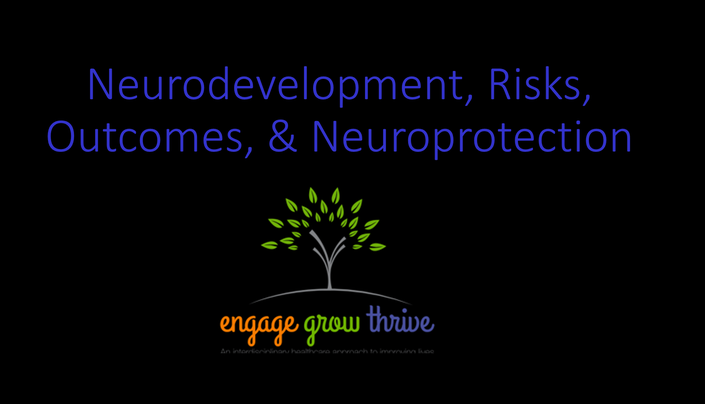
Neurodevelopment, Risks, Outcomes, & Neuroprotection
The small baby is at risk for neurodevelopmental injury from a variety of etiologies including their developing neuroanatomy. Injuries can occur structurally and/or developmentally. There are many factors in caring for these fragile babies that increase their risk. This presentation lays the foundation for understanding neurodevelopment, the pathogenesis of injury, and the risks faced by the preterm neonate to best provide key strategies for neuro-protection and neuro-promotion for neuro-development of the preterm infant brain. An understanding of the developing anatomic structures provides the basis for understanding what we do every minute of every day caring for premature babies determines who they become.
Objectives:
1. Identify two anatomic structures or features of the preterm infant brain that increase the risk of brain injury.
2. List two morbidities that potentially increase long-term neurodevelopmental risks for premature infants.
3. Describe the prevalence of long-term neurodevelopmental sequelae in premature infants.
4. Name two neuroprotective practices to implement in the care of the small baby to prevent intraventricular hemorrhage.
5. Identify two care strategies to improve neurodevelopmental protection for small babies.
Total CE 1.6
NCC Code NNP 2 or 7
NCC Code NIC 2 or 7
NCC Code LRN 2 or 7
Rx = 0.25
*This presentation was included in the Small Baby Care Specialist® Program
Last updated: October, 2021
Your Instructor

Mindy is a doctoral prepared neonatal clinician with an aptitude for application of evidence into practice. She has experienced and mastered many roles working in the NICU for over 30 years. She has first-authored two papers demonstrating the application of evidence into practice with positive clinical outcomes while supporting a team-based approach to care. Her foundational core is an enthusiasm for quality and improving the patient, family, and team experience in the NICU. She is a faculty member for the Vermont Oxford Network (VON) Quality Improvement Collaborative, Micropremature Homeroom. Care of the Extremely Low Birth Weight Infant is Mindy’s ardent focus. Her respect for the resiliency of the ELBW infant inspires her to share her extensive knowledge and expertise by designing programs and tools to improve the multidisciplinary team’s model of care for this vulnerable population.
Course Curriculum
-
StartInstructions
-
StartNeurodevelopment, Risks & Outcomes Handout
-
StartNeurodevelopment, Risks, Outcomes & Neuroprotection Part 1 (22:34)
-
StartNeurodevelopment, Risks, Outcomes & Neuroprotection Part 2 (19:24)
-
StartNeurodevelopment, Risks, Outcomes & Neuroprotection Part 3A (16:54)
-
StartNeurodevelopment, Risks, Outcomes & Neuroprotection Part 3B (23:07)
-
StartNeurodevelopment, Risks & Outcomes Suggested Reading
-
StartEvaluation